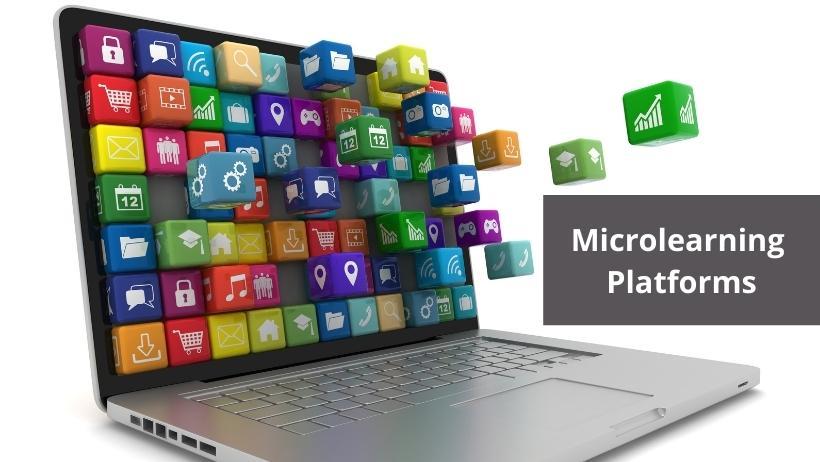Microlearning: how Bite-Sized Content meets Modern Learners’ needs
In today’s fast-paced, digital-first world, microlearning has emerged as a transformative approach in the field of education and corporate training.By delivering bite-sized learning content,microlearning aligns perfectly with the evolving learning habits of modern learners. Whether you’re a training professional,educator,or simply someone who loves fast,effective tutorials,understanding microlearning can help you harness its advantages for real results.
What is Microlearning?
microlearning refers to an educational approach that breaks down complex information into manageable, easily digestible segments, usually spanning 3 to 7 minutes. Unlike traditional eLearning modules, which can be lengthy and text-heavy, microlearning focuses on laser-targeted topics delivered in multimedia formats—think videos, quizzes, infographics, and quick guides.
- Focused on a single learning outcome
- Highly visual and interactive
- Accessible on-demand via mobile devices
- Designed for just-in-time learning
The Rise of Microlearning: Why Now?
The shift towards microlearning is fueled by the changing behavior and preferences of modern learners. With busy schedules, shorter attention spans, and an on-the-go lifestyle, traditional training methods often feel overwhelming and outdated. Microlearning delivers concise,relevant information exactly when and where learners need it.
Current trends catalyzing microlearning adoption include:
- Mobile-first learning: 91% of adults keep their smartphones within arm’s reach at all times,making learning on-the-go easier than ever.
- Changing workplace priorities: Employees seek training that fits into their workflow without disrupting productivity.
- Continual upskilling: Companies require employees to update their skills frequently, making microlearning ideal for ongoing training.
Key Benefits of Microlearning
What makes microlearning so effective for today’s learners? Let’s dive into its top advantages:
- Improved Knowledge Retention: Short, focused modules decrease cognitive overload and boost memory recall.
- Greater Engagement: Interactive and multimedia-rich content keeps learners interested and motivated.
- Flexible & Accessible: Learners can access microlearning content anytime, anywhere, on any device.
- Cost-Effective: Faster content creation and delivery often means reduced course growth costs.
- Perfect for Just-in-time Training: Quickly address knowledge gaps as they arise, supporting real-world performance.
Microlearning Formats and Examples
Microlearning isn’t limited to video clips: the method encourages creativity across a variety of formats. Some popular microlearning content types include:
- Micro-videos: Short explainer videos breaking down tricky concepts.
- Infographics: Visual summaries of key processes or statistics.
- Flashcards: Digital Q&A cards for quick revision.
- Interactive quizzes: Gamified assessments for knowledge checks.
- Pocket guides: Downloadable PDFs accessible on mobile devices.
Case example: Duolingo, a leading language-learning app, leverages microlearning by delivering daily 5-minute interactive lessons, helping users steadily improve their skills without feeling overwhelmed.
Best Practices for Designing Microlearning Content
creating impactful microlearning courses requires more than just chopping up long lessons into smaller chunks. Here are essential best practices to follow:
- Set clear learning objectives: Each microlearning module should address one specific goal or competency.
- Make it interactive: Use polls, quizzes, branching scenarios, or drag-and-drop activities to boost engagement.
- Use multimedia: Mix visuals, audio, and interactive elements for multi-modal learning.
- apply “Just-in-Time” delivery: Enable learners to access content precisely when they need it, such as before a task or meeting.
- Optimize for mobile: design for small screens and minimal navigation to support true on-the-go learning.
- Keep it short: Aim for modules that take 5-7 minutes to complete and avoid information overload.
How Organizations Use Microlearning: Real-World Cases
Microlearning is making a tangible difference in both academic and corporate settings. Here are a few striking examples:
- Sales Enablement: Leading retail brands deploy mobile microlearning to update frontline employees on product features, boosting both confidence and conversion rates—frequently enough in as little as 3 minutes per module.
- Healthcare: Hospitals and clinics use microlearning to provide instant refresher courses on compliance and safety protocols, ensuring everyone stays informed.
- Technology Companies: Software firms use microlearning for “feature flash” tutorials,enabling global teams to quickly master new digital tools.
“We saw course completion rates jump by 45% when we switched to microlearning modules for onboarding,” reports an HR Learning Manager at a global fintech company.
Top Tools & platforms for Creating Microlearning Content
Numerous learning management systems (LMS) and content authoring platforms streamline the process of building, tracking, and measuring microlearning courses. Some of today’s top-rated tools include:
- Articulate 360
- Rise
- iSpring Suite
- TalentLMS
- duolingo (for language learning)
Each platform offers unique features, such as mobile optimization, analytics, gamification, and easy integration with existing WordPress LMS plugins.
Tips to Implement Microlearning in Your Association
Ready to embrace microlearning? Here’s how to get started:
- Assess training needs: Identify which skills or compliance requirements can be addressed through short modules.
- Start small: Roll out a pilot project focusing on a single topic or audience segment.
- Collect feedback: Use in-module surveys and analytics to refine your approach.
- Promote microlearning: Build awareness among staff or students and highlight time-savings.
- Iterate and scale: Expand successful microlearning to other topics or departments.
Conclusion: Microlearning as a Smart Solution for Modern Learners
The age of microlearning is here, driven by the demands of modern learners for fast, flexible, and engaging content. By embracing bite-sized modules, organizations can drive higher completion rates, reinforce key concepts, and support continuous learning—without overwhelming their audience.Whether for onboarding, compliance, or upskilling, microlearning enables education that moves at the speed of life.
Start exploring microlearning today and meet the needs of your team or audience—one bite-sized lesson at a time!

